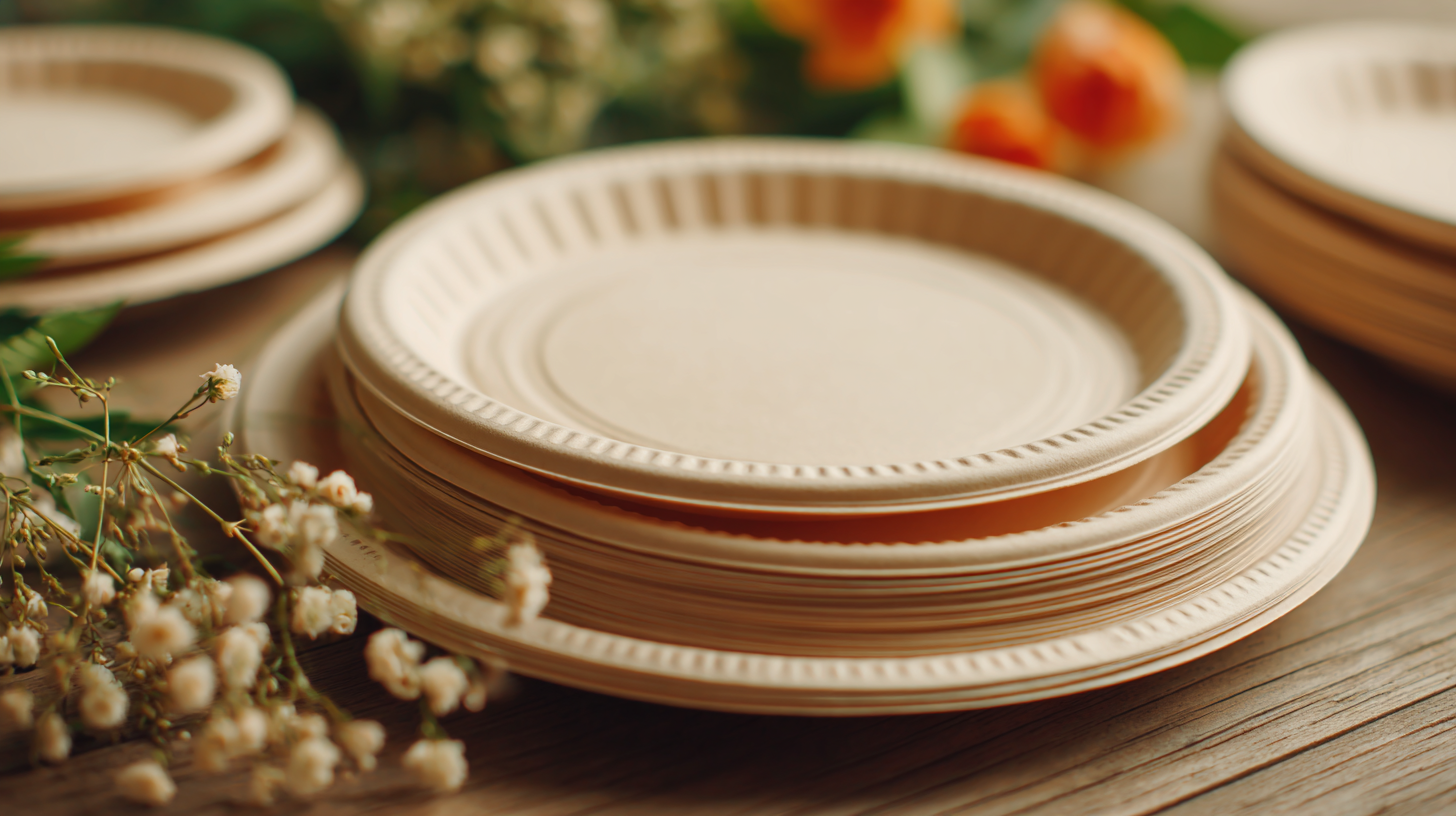Leave Your Message
In recent years, the demand for eco-friendly alternatives to traditional disposable products has surged, with the global compostable tableware market projected to reach $9.6 billion by 2027, growing at a CAGR of 14.7% (Research and Markets, 2020). Among these sustainable options, Compostable Paper Plates have gained significant attention due to their ability to decompose naturally and reduce landfill waste. This surge in popularity can be attributed to increasing consumer awareness about environmental issues and the push for zero-waste initiatives. As manufacturers from countries like China rise to meet this demand, they ensure that a diverse range of high-quality compostable paper plates is available for both individual and commercial use. This guide will explore the top compostable paper plates on the market, highlighting their features, benefits, and why they are becoming a preferred choice for eco-conscious consumers and businesses alike.

Disposable paper plates have become a popular alternative for convenience in gatherings, picnics, and everyday meals. However, their environmental impact is often overlooked. Traditional paper plates, while biodegradable, typically undergo extensive processing and may be coated with materials that hinder decomposition. This means that even though they are made from renewable resources, they can still contribute to landfill waste and pollution for longer periods.
In contrast, compostable paper plates are designed to break down efficiently in composting conditions, converting into nutrient-rich soil rather than lingering in landfills. These plates are made from sustainable materials, such as bamboo or sugarcane, which not only reduce waste but also promote responsible consumption. By choosing compostable options, consumers can significantly lower their environmental footprint and support practices that contribute to a healthier planet. Understanding the differences between standard disposable plates and truly compostable ones empowers consumers to make informed choices that align with eco-friendly values.

When selecting high-quality compostable paper plates, there are several key features to consider. First and foremost, look for plates made from renewable resources such as sugarcane, bamboo, or recycled paper. According to the Biodegradable Products Institute (BPI), such materials not only reduce waste but also ensure a smaller carbon footprint during production, marking them as a superior choice for eco-conscious consumers.
Another critical aspect is the certification of the compostability of the plates. It's essential to choose products that meet the ASTM D6400 or EN 13432 standards, which verify that the material will break down in an industrial composting facility. Research from the Composting Council Research and Education Foundation indicates that compostable products can divert significant amounts of waste from landfills, contributing to sustainable waste management practices. Additionally, durability is vital; high-quality compostable plates should be able to hold food without leaking or bending, making them suitable for various occasions, from casual picnics to formal events.
When it comes to sustainable dining solutions, compostable paper plates are gaining traction among eco-conscious consumers and brands alike. According to a 2021 report by the Environmental Protection Agency, food waste is one of the largest components of municipal solid waste, with approximately 30-40% of the food supply wasted in the U.S. alone. This context makes compostable products a key innovation in reducing environmental impact, especially when coupled with active composting initiatives.
Leading brands in the industry, such as GreenWorks and Eco-Products, are driving the adoption of compostable paper plates with their unique offerings. GreenWorks focuses on using unbleached, recycled materials, ensuring that their plates are free from harmful chemicals and dyes. Their products reportedly decompose within 90 days in a commercial composting facility, promoting a circular economy. Meanwhile, Eco-Products utilizes an advanced manufacturing process that incorporates bioplastics derived from renewable resources, which not only enhances the durability of their plates but also ensures that they break down efficiently in composting settings. With the demand for sustainable tableware on the rise—projected to reach $5.6 billion by 2029 per a recent market analysis—these brands are well-positioned to lead the charge in creating greener dining experiences.
As the demand for sustainable tableware grows, innovative technologies are redefining the landscape of compostable paper plates. A recent report from the Biodegradable Products Institute indicates that the global market for compostable tableware is expected to reach $4.8 billion by 2026, driven by increasing consumer awareness around plastic waste and environmental sustainability. New advancements in material science have paved the way for more durable, biodegradable products that maintain functionality while reducing environmental impact.
One such innovation includes the development of plant-based coatings that enhance moisture resistance in paper plates. A study by the Journal of Cleaner Production highlighted that these coatings not only help in extending the shelf life of compostable tableware but also significantly improve their composting rate—up to 90% biodegradability within 90 days in industrial composting facilities. Furthermore, companies are exploring the use of agricultural by-products, such as sugarcane and bamboo, as raw materials for production, leading to a decrease in carbon footprints associated with manufacturing. As these technologies continue to evolve, they promise a more sustainable future for food service and catering industries.
| Material | Size (inches) | Certified Compostable | Durability Rating | Price Range ($) |
|---|---|---|---|---|
| Sugarcane | 10 | Yes | High | 5 - 10 |
| Bamboo | 9 | Yes | Medium | 8 - 15 |
| Recycled Paper | 7 | Yes | Low | 3 - 6 |
| PLA (Polylactic Acid) | 8.5 | Yes | Medium | 6 - 12 |
| Palm Leaf | 10 | Yes | High | 10 - 18 |
The compostable paper plate market has been gaining significant traction as consumers become increasingly aware of environmental issues. More than ever, shoppers are seeking sustainable alternatives to traditional plastic and foam products. This shift in consumer preference is primarily driven by a growing desire to reduce waste and the carbon footprint associated with food packaging. As a result, manufacturers are responding by innovating and expanding their offerings of compostable plates, focusing on materials that are not only biodegradable but also appealing in design and functionality.

Additionally, demographic trends reveal that younger consumers, especially Millennials and Gen Z, are leading the way in this movement. They are more likely to prioritize eco-friendly products and are willing to pay a premium for items that align with their values. This group is significantly influencing market trends, pushing companies to highlight the sustainability of their products in marketing campaigns. As awareness of climate change and its impacts continues to rise, the demand for compostable paper plates is expected to grow, reflecting a larger commitment to sustainable living among consumers.
